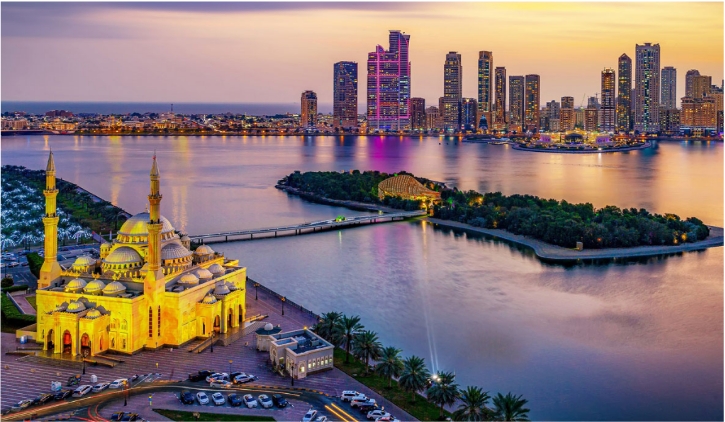From purple mountain majesties to amber waves of grain, the diversity and drama of America’s natural landscape is rivaled by few other nations. Thankfully, our forefathers had the foresight to preserve our environmental treasures by laying the groundwork for an extensive national park system that continues to expand today. Encompassing swamplands, sequoia forests, active volcanoes and painted deserts, these protected areas provide adventurous visitors with a firsthand look at the unique beauty of the untouched American wild.While all 59 U.S. national parks are worth a visit, Gayot’s picks for the Top 10 National Parks should provide a good starting point.
1. Bryce Canyon National Park
Utah
Bryce Canyon in Utah stands alone among natural phenomena with its vibrant red rock structures and spires that reach an elevation of 2,000 feet. The horseshoe-shaped amphitheaters that make up the park provide stunning views of the hoodoos, unique geological formations shaped like oversized totem poles that are a result of frost weathering and erosion. While most visitors experience the scenic drive, with access to thirteen viewpoints along the way, Bryce Canyon’s magical beauty is best seen on foot. With eight marked trails that can be hiked in less than a day, and two overnight hiking trails that require backcountry permits, there are plenty of areas to explore from within. For an elevated experience, opt to see the park on horseback for a day. Canyon Trail Rides offers a two-hour tour of the canyon floor and half-day expeditions with views of the Wall of Windows in the Peekaboo Loop and 1,600-year-old Bristlecone Pine trees. Since the canyon is especially enchanting in the early morning hours and at sunset, when it is bathed in golden light, lodge close by such as at the reliable Bryce Canyon Resort Utah Hotel.
Click here for more information on Bryce Canyon National Park.
2. Carlsbad Caverns National Park
New Mexico
Situated in the Guadelupe Mountains of southeastern New Mexico, far away from city lights — or any lights, really — Carlsbad Caverns National Park is a great place to view the night sky in a whole new way. The park offers full moon and star party tours to take in the natural illumination, but the real highlights are the 117 absolutely marvelous caves formed by sulfuric acid that has eaten away at the limestone. The rock formations and stunning “cathedral”-like interiors are nearly without rival. Visitors can take guided and unguided tours of the Hall of the White Giant and the Spider Cave, and watch Mexican free-tail bats burst from Carlsbad Cavern at dusk in the summertime.
Click here for more information on Carlsbad Caverns National Park.
3. Death Valley National Park
California
Death Valley National Park is a world of extremes. Situated below sea level, it features snow-capped peaks and stark deserts. Freak rainstorms bring on wildflower blooms and hidden pockets of wildlife abound. This land of contrasts is a special draw for photographers looking to capture its quiet beauty. Take a photo tour with a seasoned photographer at the ideal time of day to capture images in just the right light. But the location’s eerie beauty only reveals itself once you get off the main roads and hike deeper into the park. While it’s a manageable day-trip from both Los Angeles and Las Vegas, we recommend staying overnight at Furnace Creek Resort. This rustic resort is a great home base for daily hiking and driving excursions, such as a trip to Scotty’s Castle. What’s a castle doing in the middle of nowhere?
Click here for more information on Death Valley National Park.
4. Denali National Park
Alaska
For overachievers who always need to be at the top, Denali National Park is a choice destination. It’s home to Mount McKinley, the highest peak in North America. The area’s myriad landscapes, from deciduous taiga forests to glaciers, rocky terrain and snow-covered mountains, change with the seasons. Visitors enjoy mountaineering and backpacking in the warmer summer months, and in the snowy winters, dog sledding, cross-country skiing and snowmobiling bring in a different group of travelers. A 91-mile road runs east to west through the park, though only the first fifteen miles are accessible by personal passenger vehicles. From that point, concessionary buses take visitors deeper into the park and air taxis take the most intrepid of explorers into the mountains where they can land atop a glacier. There are plenty of campgrounds for those who don’t mind the nighttime chill, but the luxury-minded would enjoy a stay at Camp Denali, which boasts sweeping views and was inspired by the homesteader lifestyle.
Click here for more information on Denali National Park.
5. Everglades National Park
Florida
The largest subtropical wilderness in the United States and the largest area for wildlife east of the Mississippi, Everglades National Park is in a league of its own. First created to protect a fragile ecosystem, it is home to 36 endangered species including the Florida panther, American crocodile and West Indian manatee. Immersing yourself in the wild with an off-road hummer tour and airboat safari is the best way to get inside the world of the Everglades. High season is December through March when temperatures take a dip and mosquitoes aren’t as bloodthirsty. The park has several walking trails, a fifteen-mile “through trail” and tram tours in the high season. For a more luxurious experience, consider staying near the southern end of the park in nearby Key Largo.
Click here for more information on Everglades National Park.
6. Hawaii Volcanoes National Park
Hawaii
For a primordial experience, head to Hawaii Volcanoes National Park, home of two active volcanoes: Kilauea and Mauna Loa, the world’s largest. The vivid landscape changes daily due to continuous lava flow. Be sure to check in at the Kilauea visitor’s center before your day of exploration for an update on daily flows. While you can easily experience the area in one day by driving through it, we recommend settling down for a few days near the summit of Kilauea. From there, you can access the park by car, air, sea or foot. A helicopter tour truly brings home the grandeur of this landscape, while a boat expedition gets you up close and personal with the newest land on earth where molten lava flows right into the water.
Click here for more information on Hawaii Volcanoes National Park.
7. Glacier National Park
Montana
Glacier National Park was established in 1910, with one million acres of land and 25 “active” glaciers that are constantly on the move due to thawing and melting. The park contains over 700 miles of hiking trails, including “Going-to-the-Sun Road,” a 50-mile walk that provides some of the most spectacular views of Montana, making it the most popular tourist destination. Located on the Canada-United States border, the park encompasses two mountain ranges, over 130 lakes, more than 1,000 different species of plants, and hundreds of animals. For a taste of true wilderness, an overnight hike through the backcountry is a great getaway. If you prefer a warm bed and a hot shower, there are four Glacier Park lodges nearby, but be sure to reserve a room ahead of time as these hotels book up fast.
Click here for more information about Glacier National Park.
8. Rocky Mountain National Park
Colorado
Hikers will rejoice over Colorado’s Rocky Mountain National Park with more than 300 miles of hiking trails and the opportunity to gain some real altitude: the tallest of the 60 peaks tops out at 14,259 feet. The park’s Trail Ridge Road crests at over 12,000 feet, and the surrounding 415 square miles encompass alpine wonderlands and stunning vistas. Taking advantage of the great outdoors, travelers can experience a field seminar to learn about the surrounding flora and fauna. Capture the beauty of the Rockies for posterity with a guided photo safari, get up close and personal on an “Elk Rut Safari” between September and October or submit to the sublime quiet and beauty of a guided safari in the winter.
Click here for more information on Rocky Mountain National Park.
9. Yellowstone National Park
Wyoming
Classic destinations always stand the test of time, and as the world’s first national park, Yellowstone certainly qualifies. Most notably the home of Old Faithful Geyser, the park features an impressive collection of lakes, mountain ranges, canyons and rivers. Centered over the Yellowstone Caldera — the largest supervolcano on the continent — the park is a singular destination for wildlife viewing in the spring, summer and fall, and is ideal for skiing in the winter. For a first-rate photo opportunity, don’t leave Yellowstone without venturing into the Hayden Valley, a prime location for grizzly bear sightings and bison encounters.
10. Yosemite National Park
Wyoming
The indelible images of Yosemite National Park made famous by the photographer Ansel Adams in the early twentieth century still pale in comparison to the real thing. A half-day’s drive from both San Francisco and Los Angeles, Yosemite cuts a wide swath through the Central Sierra Nevada, characterized by grand views, hidden waterfalls, glacial lakes and boulder fields. A backpacker’s paradise and a rock climber’s mecca, the park offers innumerable options for adventurers and casual naturalists alike. Yosemite Valley, home to iconic features such as Half Dome and El Capitan, covers less than one percent of the park but is the most widely visited. Accommodations range from basic campsites to a National Historic Landmark, The Ahwahnee.
















